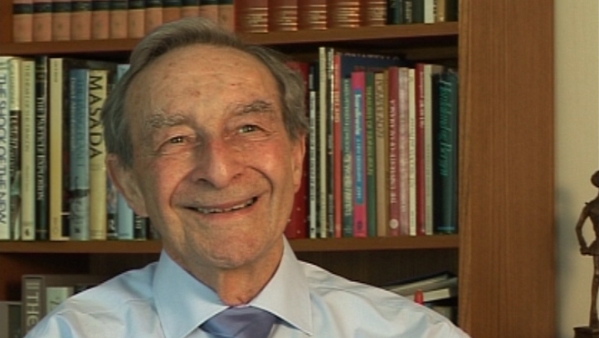NEXT STORY

Planning help at Newcastle University
RELATED STORIES

NEXT STORY

Planning help at Newcastle University
RELATED STORIES



In negotiating for the Chair, I was asked by Professor Wynne-Jones who was the Chairman of the School of Chemistry... I said, ‘Well, what is the relationship between the lecturing and the research of inorganic chemistry, which is a new department, with organic chemistry under Jim Baddiley, and physical chemistry under yourself, Wynne-Jones?’ And he said, ‘Well, what do you think it should be?’ And I said, ‘Well, I think the simplest arrangement is a third, a third, a third’. And he gulped and said, ‘Well that’s not usual, is it?’ And so I said, ‘No, but we want to be in the lead, as we were becoming a new university’. And so he said, ‘Alright, if you think that’s right, that’s what you’ll have’. So I was very pleased about that and, in fact, I have to say that Wynne-Jones, who later became Lord Wynne-Jones under Harold Wilson’s regime, stuck religiously to that – he gave me enormous support in starting up there. We had to build new laboratories in the Armstrong building, part of the Arts block actually, and they were put in charge whilst I was... before I’d come up there, and Jim Baddiley went along with the idea as well. So, in fact, we had a group of three chairs in, if you like, a federal School of Chemistry. And that was an importance advance, I think, for inorganic chemistry because, up until that stage, although as I said there were a few chemistry departments that had inorganic chemists in them, very frequently the inorganic chemistry in other universities was a very minor adjunct, particularly in the early years so there was no research group from final year and so forth. And that we were able to establish, at a stroke, as they say.
Norman Greenwood (1925-2012) was born in Australia and graduated from Melbourne University before going to Cambridge. His wide-ranging research in inorganic and structural chemistry made major advances in the chemistry of boron hydrides and other main-group element compounds. He also pioneered the application of Mössbauer spectroscopy to problems in chemistry. He was a prolific writer and inspirational lecturer on chemical and educational themes, and held numerous visiting professorships throughout the world.
Title: Negotiations for the Chair of Inorganic Chemistry at Newcastle University
Listeners: Brian Johnson
Professor Brian FG Johnson FRS, FRSE, FRS Chem, FAcad Eu, FAS. Professor of Inorganic Chemistry University of Edinburgh 1991-1995, Professor of Inorganic Chemistry University of Cambridge 1995-2005, Master Fitzwilliam College Cambridge 1999-2005. Research interests include studies of transition metal carbonyls, organometallic chemistry, nano- particles and homogeneous catalysis. Professor Johnson is the author of over 1000 research articles and papers.
Tags: Lord Wynne–Jones of Abergele, Professor Wynne-Jones, James Baddiley, Professor Sir James Baddiley
Duration: 2 minutes, 10 seconds
Date story recorded: May 2011
Date story went live: 25 November 2011